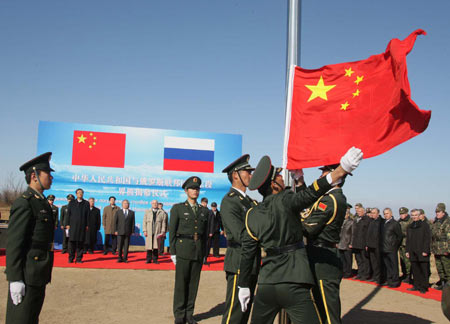Russia and China together with Mongolia have launched a major new transportation project. Although in the near future it will have only regional importance (especially for the Siberian regions of Russia), in the future a new route can become one more branch of the global transit between China and Europe.
Russia, Mongolia and China have inaugurated a new route for the passage of freight transit vehicles from the port of the Chinese city of Tianjin through the Mongolian capital of Ulan Bator to the main city of the Russian Republic of Buryatia, Ulan-Ude.
This symbolic mileage should help countries to sign three intergovernmental agreements on the international transport using the Asian Highway.
“We are confident that the development of transport along this corridor will give impetus to the development of all areas through which it will pass,” Head of the International Cooperation at Department of Ministry of Transport of the Russian Federation, Roman Alexandrov, said in an interview with Vzglyad.ru news website.
The new route from China is an alternative passage to the existing route today, which starts from Beijing and goes through Zabaykalsk in Irkutsk. This new route is 1,500 km shorter. The cargo column right now goes to Ulan-Ude, but it is assumed that the track will go further to Irkutsk and Novosibirsk.
Russia’s Siberian regions will be connected with China and Mongolia via highways.
Part of Something Larger
However, this route should only be a first step towards the realization of more global projects. This economic corridor may pave the way to the possibility of integrating this route into a more global one.
The idea of constructing the Trans-Eurasian transport corridor involves the creation of highways, high-speed and conventional rail, telecommunication networks, pipelines, customs terminals in Europe (starting with London) through Russia via Moscow, Krasnoyarsk, Irkutsk, Khabarovsk and Vladivostok.
In theory, the route from China through Mongolia easily intersects with the Irkutsk Trans-Eurasian transport corridor.
Mongolia, which is a land locked country, is seeking to open a route for increased business transportation. It has developed the “Mongolian Steppe Route” which provides not only the development of roads from China to Russia, but in general, development of transport and logistics infrastructure in the country.
The plan is to upgrade all of the railway lines and build a high-speed highway with a length of over 1,000 km, which would be crossing over Mongolia from south to north.
Russia and China have approved the Mongolian Steppe in 2014. It seems that the idea behind this is similar to the old “Great Tea Route” which was developed for economic and tourist routes and for integration of a global transport flow.
Effects of New Route
However, for Buryatia and the southern regions of Siberia a new road is important. It really is a short and easy route. It will facilitate the transportation of goods, speed up their flow and also relieve carriers from unnecessary spending.
It is estimated that by 2020 due to the distribution of traffic flows via the new routes, freight traffic will grow by 17-20%.
“In the future, growth is possible by up to 10% per year, which corresponds to an average annual growth of the volume of foreign trade of Russia and China,” General Director of the Russian Agency of Road Transport (Rosavtotrans) Alexey Dvoinih said.
The growth of trade turnover between the southern regions of Eastern Siberia and China will benefit both the sides.
“The demand for Russian raw materials on the part of Chinese businessmen will give impetus to the development of local industries, including the coal industry. At the same time, the emergence in the market of cheapened Chinese consumer goods allows the impact of the crisis on living standards of the population to be neutralized,” partner at the Kirikov Group, Daniel Kirikov told Vzglyad.ru.
China for its part, will receive new markets and access to cheap raw materials. Mongolia will also ensure economic growth through the development of transport and service infrastructure in the form of gas stations, catering establishments, hotels and so on.
SPUTNIK
R.S

